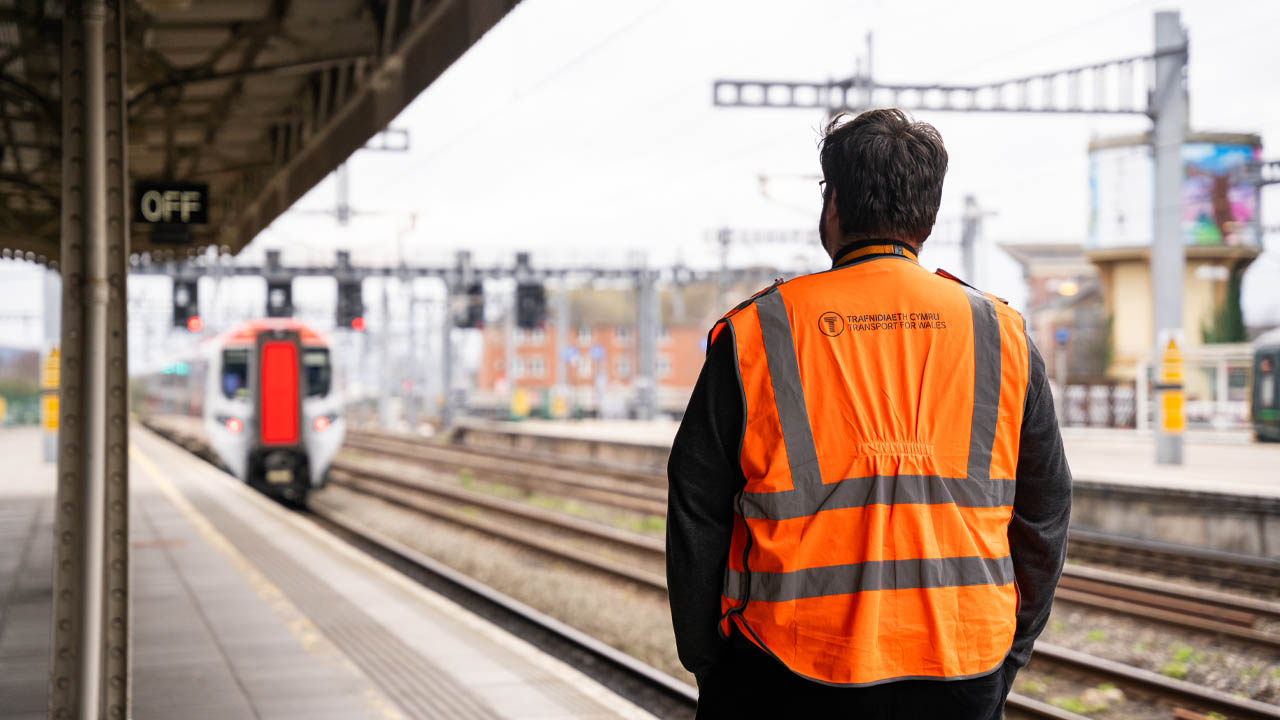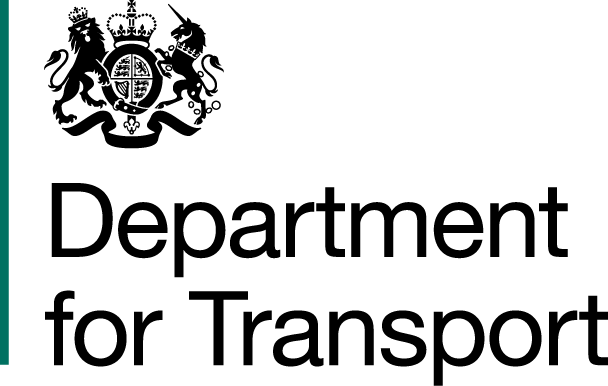Disruption and alterations
We can help you check your journey

Where's my train?
You can check if your train is running on time and find details of any changes to our services on the TfW app.
I'm meeting someone at the station. How can I check if the train is on time?
You can check real-time departures and arrivals at our stations.
Is there any engineering work affecting my journey?
You can find details of our planned improvement works on the network for the next 12 weeks.
My journey was affected by disruption. How can you help?
If you get to your destination station 15 minutes or more later than scheduled because one of our trains was late or cancelled for any reason, you can apply for Delay Repay compensation.
Decided not to travel because of the disruption? You can request a refund instead.
Need to speak to us? We’re here to help.
Contact our Customer Relations team
We can help with anything from finding the best route for your journey to alerting you about disruption to support with changing your tickets or claiming compensation.
On social media
We typically reply within 10 minutes and we're here to help you seven days a week. See our service times below.
Chat on WhatsApp 07790 952 507
Monday to Friday: 07:00 - 20:00
Saturday: 08:00 - 20:00
Sunday: 11:00 - 20:00
X @tfwrail
Monday to Friday: 07:00 - 20:00
Saturday: 08:00 - 20:00
Sunday: 11:00 - 20:00
By phone
You can call us 24/7 every day (except Christmas Day and Boxing Day)
If you prefer to talk to us in Welsh, please call 03333 211 202 and select option 1.
Calls to our number are charged at a local rate from a BT phone.
03333 211 202
FAQs
Want to know more about how we deal with delays, break downs, service alterations, and disruptions.
Why is my train delayed, cancelled or replaced by bus?
Your train can be delayed, cancelled or replaced by bus due to one of many possible reasons, which most of the time is out of Transport for Wales' control.
1. Weather - leaves, flooding and snow on the line can affect services.
2. Obstruction on the line: Animals, Trespassing, fallen trees
3. Vandalism such as cable theft
4. Power failure to line side equipment. Problem with station infrastructure such as power failure or fire.
5. Bridge strikes - road vehicle hit the foundation and/or bridge structure.
6. Other trains (freight or passenger) further down to line delayed or stopped.
7. Over-running Engineering work - Network Rail often schedule engineering work on track and line side equipment during the night and on weekends which can over run by a few hours.
Very rarely train services run late or cancelled which is down to Transport for Wales, this could be a mechanical fault with a train, or a shortage of staff. We work hard to keep these delays to a minimum, which is why we are in the top 5 of all UK rail operators in terms of punctuality and reliability.
We incur financial penalties for any delays we cause, and also recognise the impact this will have on our valued passengers. View live updates on all Transport for Wales services, where you can also sign up for free email alerts and other services.
What is your policy on providing alternative transport?
In certain circumstances, then we will arrange road transport for you, at our expense, if this will get you to your destination significantly quicker than the next train.
This will normally be a bus or taxi, if one is available to us that meet our safety and accessibility standards. In remote areas and at busy times, such as school run times, it is often difficult to arrange a bus quickly. We work over and above the obligations set out in the National Rail Conditions of Travel, which every Train Operating Company works to. Details are available here.
Do your trains always wait for connections?
Yes to a point
We have a team of controllers who manage the effects of disruption and are in regular contact with train crew, stations and other transport operators' controllers.
Controllers make minute by minute decisions on all connections and are mindful of the operation of the overall network as well as our passengers’ needs.
Factors they have to consider include delays to passengers already on a train that has to wait, the potential to miss other connections, what the alternative connections are, and other consequences of waiting.
We are also mindful of the fact that our success is measured by many in terms of simple punctuality, and therefore, a good balance between maintaining connections and maintaining our punctuality is something we strive to achieve.
Onward journeys or events
Passengers should leave sufficient time for onward travel or for getting to/from events.
If you're catching a plane, make sure to leave plenty of time. For flights, we advise asking your airline how much time you need to leave for check-in.
How do you deal with service disruption?
Transport for Wales knows that the provision of information about train services experiencing disruption is a priority for customers and is an area we focus on.
The rail industry has produced an Approved Code of Practice which sets out high-level guidance and good practice in providing information to customers during disruption. Transport for Wales uses this Code of Practice as a framework for delivering timely, accurate, and consistent information to customers during disruption so that they can make well-informed travel decisions.
You can read more about this and the improvements the industry is making to passenger information provision in our Passenger Information During Disruption Local Plan.
The Association of train operating companies' guidance and good practice can be viewed in the Approved Code of Practice.
How do leaves on the line affect trains?
Think of leaves on rails as black ice on roads and you'll begin to understand the nature of the problem.
We're not talking about piles of dead leaves, but a hard slippery layer that coats the rails and is very difficult to remove.
Briefly, this is what happens:
- leaves are swept onto the track by the slipstream of passing trains
light rain falls - train wheels crush the wet leaves at a pressure of over 30 tonnes per square inch
- this compacts and carbonizes the leaves, forming a hard, Teflon-like coating on the rails.
Therefore, trains have to operate at slower speeds to ensure safety and to reduce the potential for wheel slip and spin.This means that drivers have to brake earlier for stations and signals and move off again more slowly. Consequently, train services can be delayed.If a train can't move because its wheels can't grip the rails, often there is no alternative route, therefore following trains are delayed or have to be cancelled.
In addition to causing severe disruption to customers, the damage inflicted on train wheels during sliding and spinning on rails is considerable and means some trains have to be taken out of service for an expensive repair. The rails too can be damaged costing many thousands of pounds to repair each year.
Fallen leaves really can disrupt rail services - not just here in Britain, but all over Europe and North America. The scale of the leaf-fall problem and the cost of keeping services running smoothly is huge:
- a mature lineside tree has between 10,000 and 50,000 leaves
- thousands of tonnes of leaves fall onto railway lines each year
- there are 20,000 miles of track to keep clear in Britain
- the annual cost of repairing damage to trains and track from leaf fall is over £10 million
- lineside vegetation management costs over £5 million each year
- the cost of felling large trees is between £20,000 and £50,000 per mile.
It is impossible to predict exactly when the leaf fall season will start and how long it will last, but the weather can provide a guide to its likely onset and how serious it is likely to be for the railway.
A severe leaf fall season often follows a wet summer. It starts with a hard frost, followed by a high wind and a period of dry weather, which causes large amounts of leaves to fall over a short period of time. But traditionally, autumn is the season of mists and mellow weather, which spreads leaf fall over a longer period and reduces the severity of the problem.
Making improvements
You can check the details of any planned works that may affect your journey.
What are you doing to improve the reliability of the infrastructure?
We discuss the infrastructure daily with Network Rail, who provide and maintain it, and we have a contract with them that provides for compensation payments when things go wrong.
Compensation helps us to cover the cost of alternative transport and compensation to our passengers. Details of compensation processes can be found in our Passenger’s Charter.
We expect to see value for money for our track access charges, and want to see more passengers attracted through reliability, rather than compensation from Network Rail. We want to see better reliability and enhancements with older equipment replaced by its modern equivalent. Every individual incident of unreliability is noted by us and discussed with Network Rail, often at very senior level.
These major enhancements are a great example of Network Rail working hard to improve the reliability and capacity of rail infrastructure.
Why do your trains break down and what are you doing about it?
Trains are highly complex mechanical machines with a very high standard of safety built-in.
Our trains have the equivalent of an "MOT" test every three days, and a high degree of preventative maintenance. Nevertheless, they run up to around 1000 miles per day and do sometimes break down, although they were designed and built to do such mileage. We always put safety first, such that sometimes a train is taken out of passenger service for a reason that might appear excessive to a motorist, such as a defective windscreen wiper.
There are many safety features linked to doors, signaling and breaking, any one of which can cause a train to be removed from passenger service if it is defective. Despite all this, we still run one of the most reliable fleets in the UK, with our fleet types regularly performing the best in the country according to the national ‘miles per casualty’ measure, which looks at the average number of miles trains of certain types run before they break down. We regularly win the Rail Industry ‘Golden Spanner’ awards for our fleet reliability.
Why does Network Rail plan and do engineering works on the network?
Network rail are responsible for the track and signalling which forms the infrastructure of the railway.
In order to maintain their high standards of safety and reliability, every so often, they have to stop trains running so that their teams can get down on to the tracks and repair and upgrade their infrastructure. This is done in a way that is as convenient as possible for the vast majority of passengers and involves a lot of night shifts.
Every so often however, a particularly large piece of work, such as a new bridge or new tracks need to be installed, and this is when operators run buses in order to give Network Rail the time to do their important work. The timing of any major work is planned alongside train operators and is designed to create as little disruption as possible. We advertise changes to our timetable well in advance of any engineering work.
Timetable planning
Why don't trains stop at some stations?
When planning our station stops, we consider the needs of passengers wanting to join services, but also the overall length of a journey.
Even if an extra stop takes only two minutes, if you add up all the stops along a line of route, for example, between Milford Haven and Manchester Piccadilly, this could add up to hours of extra journey time. Balancing the needs of passengers wanting to travel from smaller stations and the passenger desire for shorter journey times is something which we think carefully about every time we change our timetable.
Certain parts of the network are so busy, that often, there isn’t enough room in the timetable to stop everywhere we would like. We listen to the feedback and look at population changes to help us meet the needs of as many current and potential passengers as we can.
Who decides the times and the frequency of the services you run?
Most of the services we operate form part of our ‘Passenger Service Requirement’ and therefore are set out under the terms of our contract.
The Passenger Service Requirement does not prevent change, but limits the changes that can be made to aspects of service such as frequency, journey times, station stops, early and late services and peak hour trains.
As part of our Franchise Agreement the Passenger Service Requirement is a public document and available from a public records office.
We can tweak and alter our timetable based on passenger demand and stakeholder interest as well as running extra trains over and above what is set out in our contract, but this depends on the cost of running these services and whether there are enough trains to deliver them.
Currently, around 20% of our services are over and above what we are asked to deliver as part of our Public Service Requirement.



